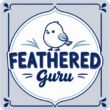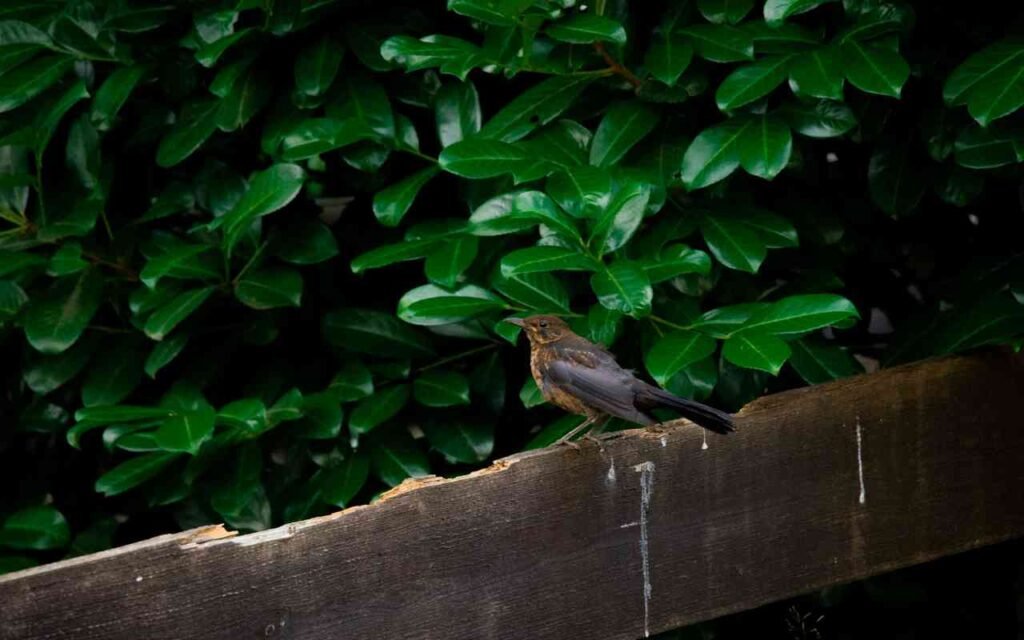You’re washing your car for the third time this week when it hits you 😩 – literally. Another splat of bird poop right on your freshly cleaned windshield. But instead of cursing the sky, you find yourself wondering: what kind of bird just bombed my Honda? I get it.
After years of birdwatching and dealing with my fair share of avian “gifts” on everything from patio furniture to hiking boots, I’ve developed what some might call an unhealthy fascination with bird dropping identification.
Trust me, once you start recognizing different species by their poop, you’ll never look at a splattered sidewalk the same way again.
Understanding Bird Droppings Basics
Bird droppings serve as biological fingerprints that can tell you surprising amounts about the species, diet, and health of your feathered visitors. According to the Audubon Society, biologists are increasingly turning to bird poop to study diet, health, and population trends.
Unlike mammals, birds don’t separate their waste streams. They produce a combination of feces and uric acid through a single opening called the cloaca, which explains that distinctive white and dark mixture you see splattered everywhere.
The consistency, color, and size of bird droppings vary dramatically based on the bird’s diet, size, and digestive system. Seed-eating birds produce different waste than insectivores, and fish-eating species create entirely different signatures. Understanding these patterns helps you identify which birds frequent your area even when you can’t see them directly.
Ever notice how some bird droppings seem more liquid while others appear more solid? This variation stems from different digestive processes and water intake patterns across species. Birds that consume lots of fruit produce wetter droppings, while those eating dry seeds create more compact waste.
The uric acid component appears as the white, chalky portion of bird droppings. Birds evolved to excrete nitrogen as uric acid rather than urea because it requires less water, making it an efficient adaptation for flight and survival in various environments.
Common Backyard Bird Droppings
Robin Droppings
American Robin droppings are among the most recognizable in suburban settings. These medium-sized songbirds produce droppings that measure about half an inch long with a distinctive tubular shape. Fresh robin droppings appear dark brown to black with prominent white uric acid caps.
What makes robin droppings unique is their seasonal variation. During spring and early summer when they’re feeding on earthworms and insects, their droppings remain consistently dark and firm. But come berry season, robin poop transforms into a purple-stained mess that can literally dye your deck furniture.
I learned this lesson the hard way when a family of robins decided my white patio chairs made perfect perches during elderberry season. The resulting purple polka-dot pattern looked like modern art, but it took weeks of scrubbing to remove completely.
Cardinal Droppings
Northern Cardinal droppings reflect their primarily seed-based diet. These bright red birds produce small, compact droppings that rarely exceed quarter-inch in length. Cardinal waste appears dark brown to black with less prominent white portions compared to insect-eating birds.
The compact nature of cardinal droppings makes them easy to distinguish from larger songbirds. They often appear in clusters around bird feeders, especially sunflower seed feeders where cardinals spend considerable time.
Blue Jay Droppings
Blue Jay droppings are notably larger than most songbird waste, reflecting their size and varied diet. These intelligent corvids produce droppings up to three-quarters of an inch long with irregular shapes that reflect their opportunistic feeding habits.
Blue jays eat everything from acorns and seeds to insects, eggs, and small reptiles. This varied diet creates droppings with mixed textures and colors, often containing visible undigested food particles. You might spot seed hulls, insect parts, or even small bone fragments in blue jay waste.
Waterfowl and Large Bird Droppings
Canada Goose Droppings
Canada Goose droppings are impossible to mistake for anything else. These large waterfowl produce substantial waste that measures two to four inches long and resembles small green cigars. Fresh goose droppings appear bright green due to their grass-heavy diet, turning brown as they dry, according to Critter Control.” (source)
Goose poop presents unique challenges for property owners because these birds produce it constantly while grazing. A single goose can generate up to two pounds of waste per day, creating significant cleanup issues in parks, golf courses, and waterfront properties.
The high water content in goose droppings means they create slippery hazards on walkways and can contaminate water sources with bacteria like E. coli and Salmonella.
Duck Droppings
Duck droppings vary significantly depending on the species and their primary habitat. Mallard droppings typically measure one to two inches long with a looser consistency than goose waste due to their more aquatic lifestyle and varied diet. According to The Open Sanctuary Project, diet influences droppings’ color and consistency significantly.
Ducks that feed primarily on aquatic vegetation produce greenish droppings similar to geese but smaller. Those eating more fish, insects, and crustaceans create darker, more liquid waste with stronger odors.
Great Blue Heron Droppings
Great Blue Heron droppings are among the most distinctive of all bird waste. These large wading birds produce liquid, projectile droppings that can travel several feet from their perches. Heron waste appears almost entirely white due to their fish-heavy diet and efficient protein processing.
The liquid nature of heron droppings reflects their high-protein, low-fiber diet. These birds essentially spray their waste, creating distinctive splatter patterns on rocks, docks, and vegetation below their favorite perching spots.
Raptor and Predatory Bird Droppings
Red-Tailed Hawk Droppings
Red-tailed Hawk droppings reveal the hunting success of these powerful predators. Hawk waste contains visible fur, bone fragments, and feathers from their prey, creating distinctive pellet-like structures mixed with liquid waste.
Hawks produce two types of waste: regular droppings and regurgitated pellets. The pellets contain indigestible materials like bones, fur, and teeth, while their liquid droppings appear predominantly white due to high protein intake from their carnivorous diet.
Owl Droppings and Pellets
Owl droppings are relatively rare to encounter because these nocturnal hunters typically roost in concealed locations. However, owl regurgitated pellets provide fascinating insights into their hunting patterns and local prey populations.
Owl pellets contain complete skeletons of small mammals, allowing researchers and enthusiasts to reconstruct entire food webs. These compact, gray pellets measure one to four inches long depending on the owl species and can remain intact for months.
I once found a collection of Barn Owl pellets in an old barn loft that told the complete story of the local rodent population. Dissecting these pellets revealed skulls from voles, mice, and shrews, creating a detailed picture of the owl’s nightly hunting success.
Seed-Eating Bird Patterns
House Finch and Goldfinch Droppings
Small seed-eating birds like House Finches and American Goldfinches produce tiny, compact droppings that reflect their specialized diet. These droppings measure less than quarter-inch long and appear dark brown to black with minimal white uric acid portions.
The small size and dry consistency of finch droppings make them less noticeable than larger bird waste. They often accumulate in small piles beneath bird feeders, mixed with discarded seed hulls and scattered birdseed.
Pigeon Droppings
Rock Pigeon droppings are unfortunately familiar to most urban dwellers. These adaptable birds produce medium-sized droppings that measure about half to three-quarters of an inch long with a characteristic coiled or twisted appearance when fresh.
Pigeon waste varies in color from gray-green to brown, depending on their diverse urban diet. The high acidity of pigeon droppings makes them particularly destructive to building materials, vehicles, and monuments.
FYI, pigeons can produce droppings every 15-20 minutes during active feeding periods, which explains why pigeon-heavy areas require constant cleanup efforts.
Seasonal Variations in Bird Droppings
Spring and summer droppings often appear darker and more solid due to increased insect consumption during breeding season. Many birds switch from seed-heavy winter diets to protein-rich insect diets to support egg production and chick growth.
Fall droppings frequently show dramatic color changes as birds consume seasonal fruits and berries. Berry-eating creates distinctively colored waste that can stain surfaces purple, red, or blue depending on the fruit species consumed.
Winter droppings typically return to more consistent colors and textures as birds rely primarily on seeds, nuts, and remaining fruits. The reduced water content in winter foods often creates more compact, drier droppings.
Health and Safety Considerations
According to Skedaddle Wildlife Bird droppings can carry numerous pathogens that pose risks to human health. Histoplasmosis, salmonellosis, and psittacosis represent serious concerns, especially in areas with heavy bird traffic or accumulated waste.
Always use protective equipment when cleaning bird droppings, including gloves, masks, and eye protection. Fresh droppings pose higher infection risks than dried waste, but both require careful handling and proper disposal.
Safe Cleanup Procedures
Wet cleaning methods reduce airborne particle risks compared to dry sweeping or scraping. Use disinfectant solutions to sanitize affected areas thoroughly, and allow proper ventilation during cleanup activities.
Never use high-pressure washing on dried bird droppings, as this creates dangerous aerosols that can spread pathogens over wide areas. Instead, soak dried waste with disinfectant before gentle removal.
Using Droppings for Bird Monitoring
Experienced birders use dropping identification as a valuable tool for monitoring bird populations and behavior patterns. The size, frequency, and location of droppings provide insights into feeding areas, roosting sites, and migration timing.
Droppings can reveal the presence of secretive or nocturnal species that rarely show themselves during normal observation hours. Owl pellets, hawk droppings, and other raptor sign often provide the only evidence of these predators in an area.
Diet Analysis Through Droppings
Fresh droppings reveal recent dietary choices and can indicate seasonal food availability or habitat changes. Unusual colors, textures, or contents in familiar bird droppings might signal environmental shifts or new food sources.
I once noticed bright orange droppings beneath a regular robin perch and discovered they’d been feasting on invasive autumn olive berries. This observation helped local land managers track the spread of this problematic plant species.
Regional and Habitat Differences
Coastal bird droppings differ significantly from inland species due to marine-based diets. Seabirds produce more liquid, acidic waste with distinctive fish odors and higher salt content.
Forest bird droppings often contain more insect parts and natural fiber, while grassland species produce waste reflecting seed and grass consumption. Urban bird droppings show the influence of human food sources and habitat modifications.
Desert birds create more concentrated waste due to water conservation adaptations, while wetland species produce larger volumes of liquid waste reflecting their aquatic lifestyles.
Photography and Documentation
Documenting bird droppings requires specific techniques to capture useful identification details. Photograph droppings next to common objects like coins or rulers for size reference, and include habitat context when possible.
Fresh droppings photograph better than dried specimens because colors and textures remain distinct. However, dried droppings often reveal structural details that fresh waste obscures.
Consider creating a personal reference collection of photographed droppings from confirmed bird species in your area. This builds valuable identification skills and contributes to local birding knowledge.
Technology and Apps for Identification
Modern birding apps increasingly include dropping identification features alongside traditional bird identification tools. These resources compare your observations with extensive databases of documented waste patterns.
However, remember that dropping identification works best when combined with other evidence like habitat preferences, seasonal timing, and confirmed bird sightings in the area.
Common Identification Mistakes
Size can deceive when identifying bird droppings. Multiple small birds can create accumulations that mimic larger species, while single large birds might produce surprisingly small waste samples.
Diet influences can dramatically alter familiar dropping patterns. Birds eating unusual foods during migration or seasonal abundance create waste that doesn’t match typical identification guides.
Age affects appearance significantly. Fresh droppings look completely different from weathered samples, and environmental factors like rain, sun, and wind alter colors and textures rapidly.
Building Your Identification Skills
Start with common species in your immediate area rather than trying to identify every dropping you encounter. Master the basics of robin, cardinal, and blue jay waste before moving to more challenging identifications.
Keep a field notebook documenting dropping observations alongside confirmed bird sightings. This builds personal reference data that improves identification accuracy over time.
Practice makes perfect with dropping identification. The more samples you observe and document, the better you become at recognizing subtle differences between similar species.
Ethical Considerations
Respect private property when investigating bird droppings. Always obtain permission before examining waste on someone else’s land, and follow Leave No Trace principles in natural areas.
Consider wildlife disturbance when studying active roosting or nesting sites. Observe from appropriate distances to avoid stressing birds or disrupting their natural behaviors.
Some areas protect bird roosts legally, making disturbance or collection of droppings illegal without proper permits. Research local regulations before conducting detailed studies.
Final Thoughts: The Art of Avian Investigation
Bird dropping identification transforms ordinary walks into detective adventures where every splat tells a story. Once you develop these skills, you’ll find yourself automatically scanning sidewalks, park benches, and car windshields for clues about your feathered neighbors.
Remember that dropping identification works best as part of broader birding knowledge. Combine waste evidence with habitat assessment, seasonal timing, and direct bird observations for the most accurate species identification.
The next time someone complains about bird droppings, you can enlighten them about the fascinating world of avian waste analysis. Who knows, you might convert another person to the surprisingly engaging pursuit of poop-based bird identification.
IMO, there’s something deeply satisfying about solving the mystery of which bird left its calling card on your car. It transforms an annoying cleanup task into a moment of natural history detective work. Just remember to wash your hands thoroughly afterward 🙂




